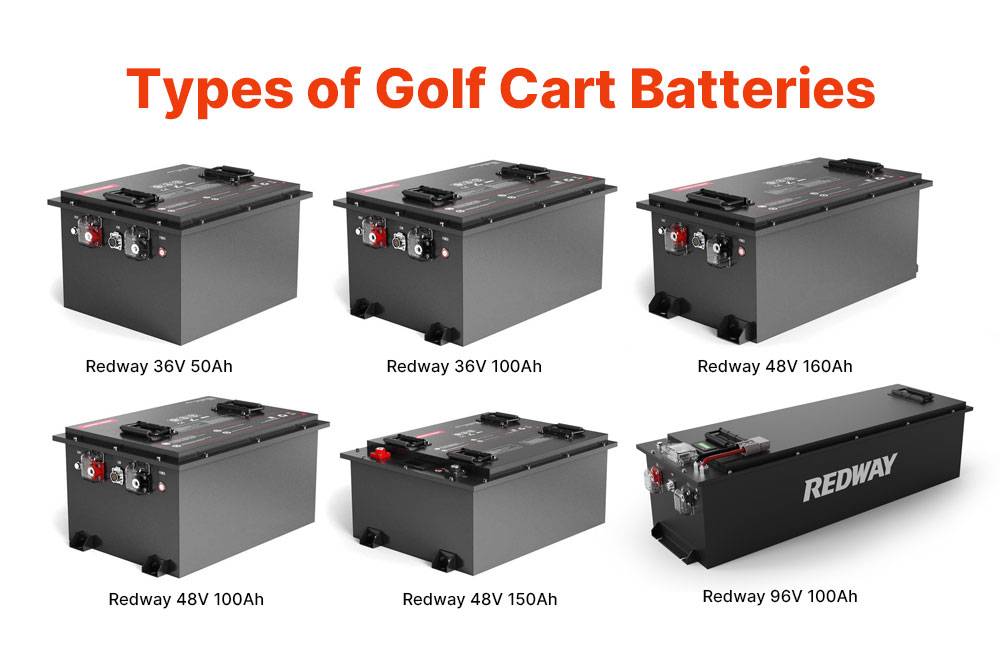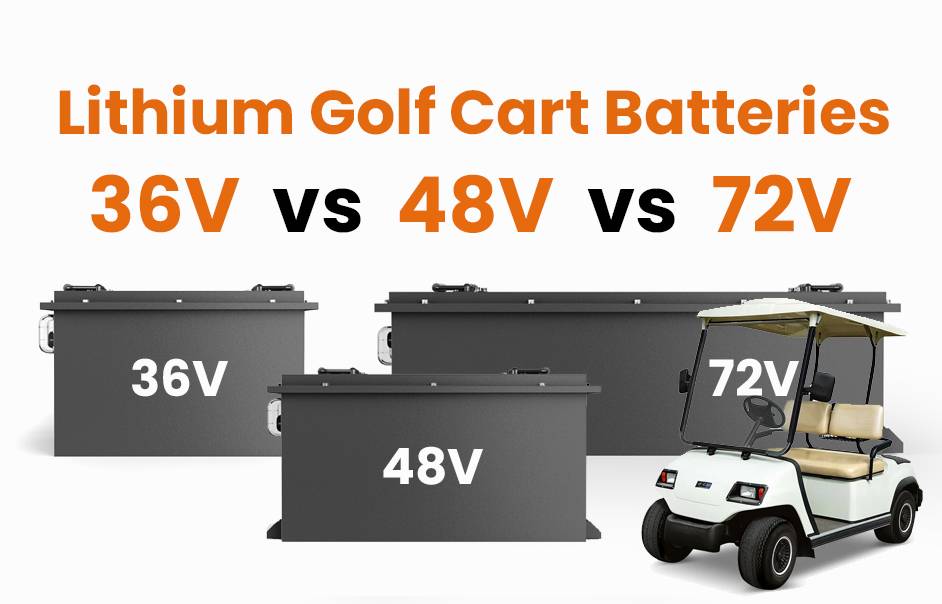
Blog
How to Choose the Right Golf Cart Battery: Types and Considerations

Choosing the right golf cart battery involves understanding different battery types, voltage requirements, capacity ratings, and your specific usage needs. The ideal choice balances performance, maintenance, longevity, and cost to maximize your golf cart’s reliability and efficiency. Knowing how to select between flooded lead-acid, AGM, and lithium batteries ensures optimal power delivery and long-term satisfaction.
What are the main types of golf cart batteries and how do they differ?
The primary golf cart battery types are flooded lead-acid, AGM (Absorbed Glass Mat), and lithium LiFePO4 (lithium iron phosphate). Flooded lead-acid batteries are traditional, affordable, but require regular maintenance such as watering; AGM batteries are sealed and maintenance-free, with better charge acceptance and longer life than flooded types; lithium batteries offer the highest lifespan, lighter weight, faster charging, and built-in battery management systems but come at a higher initial cost.
How do voltage and capacity impact your golf cart battery choice?
Golf carts typically use 36V or 48V battery systems, arranged by connecting several 6V or 12V batteries in series. Choosing the correct voltage is vital for compatibility with your golf cart’s motor. Capacity, measured in ampere-hours (Ah), influences how long your cart can operate before recharging. Higher Ah ratings offer longer run times but usually increase battery size and cost. Matching voltage and capacity to your usage patterns ensures optimal performance.
What are the key factors to consider when selecting a golf cart battery?
Consider your golf cart’s voltage requirements, intended daily use, terrain type, and desired range. Maintenance preferences influence whether to choose a sealed AGM or lithium option over traditional flooded batteries. Budget constraints impact the trade-off between upfront costs and long-term savings. Environmental conditions such as temperature extremes also play a role in battery performance and lifespan.
How does maintenance differ among golf cart battery types?
Flooded lead-acid batteries require periodic electrolyte refilling, cleaning terminal corrosion, and equalizing charges, demanding consistent upkeep. AGM batteries are sealed, eliminating watering needs and reducing maintenance but need monitoring to avoid deep discharge and overcharge. Lithium batteries are largely maintenance-free, equipped with integrated Battery Management Systems (BMS) that protect against overcharging and cell imbalance, making them ideal for hassle-free operation.
What are the benefits of upgrading to lithium golf cart batteries?
Lithium LiFePO4 batteries deliver superior cycle life—often 4-6 times longer than lead-acid—are significantly lighter, and can recharge faster, leading to less downtime. Their steady voltage output throughout discharge improves golf cart performance, especially on hills or tough terrain. Lithium batteries reduce environmental impact with no acid or heavy metals and generally require less ventilation, enhancing installation flexibility.
How do environmental and usage conditions influence battery choice?
Extreme temperatures affect battery efficiency and longevity: lead-acid batteries degrade faster in heat, while lithium variants tolerate wider temperature ranges but benefit from thermal management. Rough terrain and heavy loads demand batteries with higher capacity and discharge rates. Frequent charging cycles flatten traditional batteries more quickly, favoring lithium for users with intense usage demands.
How can you calculate the right amp-hour rating for your golf cart battery?
Estimate your cart’s average current draw during operation, then multiply by your desired runtime. For example, if your cart draws 50 amps and you want a four-hour runtime, you’d need at least 200Ah capacity (50 amps × 4 hours). It’s sensible to choose a battery with a slightly higher Ah to accommodate unexpected loads and extend battery life.
What are the safety considerations when choosing and handling golf cart batteries?
Ensure batteries have built-in protections such as BMS for lithium types to prevent overcharge, over-discharge, and thermal runaway. Always follow manufacturer instructions for charging rates and maintenance. Use batteries certified by reputable organizations to ensure quality and safety. Proper battery storage away from extreme temperatures and regular inspections to detect swelling or leaks help maintain safe operation.
How does Redway Power’s lithium battery technology benefit golf cart users?
Redway Power manufactures ISO-certified, high-quality lithium golf cart batteries featuring advanced BMS integration, enabling fast charging, extended cycle life, and real-time monitoring. Their MES-controlled manufacturing process ensures consistency and reliability, delivering batteries tailored to demanding golf cart applications for superior performance and long-term value.
When should you consider replacing your golf cart battery?
Signs for replacement include diminished runtime, slow recharge, visible physical damage, or significant capacity loss measured via voltage testing. Regular load testing or BMS diagnostics can help anticipate failure before it affects performance. Timely battery replacement prevents unexpected downtime and protects your golf cart’s motor and electronics from power fluctuations.
Redway Power Expert Views
“Selecting the right golf cart battery encompasses more than voltage and capacity — it’s about understanding your usage patterns, maintenance willingness, and environment. At Redway Power, we focus on building lithium batteries with integrated management systems and advanced manufacturing controls, providing customers with durable, efficient, and safe power solutions designed to excel under various conditions.” — Expert from Redway Power
Conclusion
Choosing the right golf cart battery requires evaluating battery types, voltage, capacity, maintenance, and environmental factors. Flooded lead-acid, AGM, and lithium batteries each have distinct advantages and trade-offs. Proper selection tailored to your golf cart’s needs maximizes performance, safety, and battery life. Redway Power’s OEM lithium batteries stand out for their advanced technology and reliability, offering a compelling upgrade path for serious golf cart enthusiasts.
FAQs
What type of battery is best for a golf cart?
Lithium LiFePO4 batteries offer long life, light weight, and low maintenance, while AGM batteries provide a maintenance-free lead-acid alternative. Flooded lead-acid batteries remain the most affordable option.
How do I know the right voltage for my golf cart battery?
Check your golf cart specifications; 36V and 48V systems are most common.
Can lithium batteries replace lead-acid batteries in golf carts?
Yes, lithium batteries are compatible replacements offering better performance and longevity.
How often should I charge my golf cart battery?
Charge after every use or at least weekly to avoid deep discharge damage.
Why choose Redway Power batteries for my golf cart?
Redway Power provides ISO-certified lithium batteries with superior quality, built-in safety management, and proven durability suited for demanding golf cart use.




